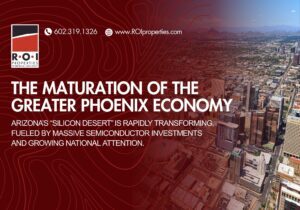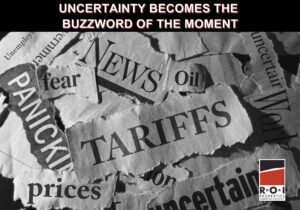You always need to proceed with caution when someone claims “It’s different this time” about a market or investment. History doesn’t always repeat, but as Mark Twain allegedly said, it does rhyme. Commercial real estate prices are on the rise, while income capitalization rates and future income projections are dropping, so it’s a good time to compare today’s situation to the most recent era in which we saw similar metrics.
At first glance, you’d likely point to the price increases experienced in 2003-04. Note, however, that boom followed on the lax lending standards of the previous few years: Funding and financing was all about other people’s money, and investors and banks were throwing it at any and every deal they could.
Today’s market is markedly different, most notably because the players are required to have more skin in the game. Investors are putting their own capital and money at risk, including more all-cash deals. Financed deals, meanwhile, have higher equity and down payment requirements and stricter loan-to-value (LTV) ratios. Yes, we’ve rebounded from the market bottom, but it’s not just about easy financing.
So, what’s behind the resurgence of commercial real estate? Return on investment. Bank CDs, stocks, bonds and other financial instruments can’t deliver the same returns as hard assets. Real estate, viewed as a more tangible, safer investment, is the beneficiary of the change in capital flow.
Trend Watching
You can’t outthink the Federal Reserve, but it appears that low, stable interest rates are here for the foreseeable future. In the event we see a significant uptick in rates, it could cause an increase in in both residential and commercial real estate deal flow to get in ahead of inflation and before prices become less affordable. Less significant interest rate increases would likely only result in minor, short-run activity.
As far as specific sectors, multifamily and apartments have seen major upward moves in pricing that may not be sustainable. The bull argument is that a larger, permanent rental pool has resulted from the economic environment. The bear argument (which I subscribe to) is that people still want to own, although the types of properties may now skew toward urban, smaller or pedestrian friendly. Bulls will contend that multifamily, with many tenants, diversifies your risk compared to an office with a single tenant. To that, I would simply note that prospective investors need to the possible changes in rental rates and vacancy rates due to the volume of product coming into the market.
Where’s the Value in Commercial Real Estate?
If you’re looking for value, multitenant office ranks No. 1 due to its fairly high vacancy rates and opportunities to add value. To uncover that value, of course, may require a significant commitment of money, time and energy to get to the next level. Tenant improvements—which can cost one or two years’ worth of rent—may be necessary to attract and sign new tenants. The heavy lifting early on can deliver long-term opportunity.
While single-tenant, triple-net investment deals in retail have seen a big jump in pricing, multitenant shopping centers offer some interesting value-add opportunities. Low vacancies may them attractive at first glance, but investors must go in with eyes wide open. Why? Landlords in some centers are not recovering full rent from tenants and having trouble recouping the common area maintenance (CAM) charges (i.e., parking lot signage, striping, building signage, lighting and other common area facilities). You’ll want to reconcile actual financials against scheduled rent before considering any deal.
Add it all up, and I believe we’re in relatively stable circumstances. More owner capital and less speculation provides a more sustainable market than easy money policies. Best of all, it gives an incentive to borrowers and owners to be committed to their properties, which creates a virtuous circle over the long haul. I believe today’s commercial real estate market is different this time—at least if you’re comparing it to the boom-bust cycle of the mid 2000s.










